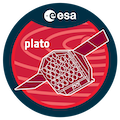Conveners
System architectures from observations
- Louise Neilsen
- Annelies Mortier
The goal of exoplanet demographics is to determine the occurrence rate of planets as a function of as many of the physical parameters that may influence planet formation and evolution as possible, over as broad of a range of these parameters as possible, and to establish the existence of trends and correlations between them, or lack thereof. I will provide an overview of the state-of-the-art...
Most detected transiting planets have orbits which would fit within that of Mercury. This host star proximity means that the properties of these planets undergo significant changes due to stellar irradiation and interactions. In contrast, temperate planets with longer orbital periods are less affected, offering crucial insights into their formation and migration histories. Characterizing...
The current sample of Circumbinary Planets (CBPs) remains very small, comprising only 14 well-characterised planets discovered through transits by Kepler and the TESS mission, along with a few more found using alternative methods. Additionally, there is ongoing debate regarding CBP detections from timing variations in eclipses of post common envelope binaries (PCEBs). CBPs discovered through...
Half of the Sun-like stars in our galaxy have a stellar companion. The number of detected planets orbiting binary stars is rapidly increasing thanks to the follow-up of TESS planet candidates by GAIA and direct imaging, which detect stellar companions in systems known to host planets. Important questions regarding the origin and demographics of planets in binaries are starting to be explored,...
Sub-Neptunes, i.e. planets with a radius in the 1-4 Earth radius range, are estimated to exist in close-in orbits around 30 to 50% of all Sun-like stars. A leading model for the formation of this population is the "breaking the chain" model. In this model, close-in systems of sub-Neptunes form in resonant chains due to the migration of planets in the protoplanetary discs. After the disc...
Multi-planet systems are important for understanding how the planets form and evolve. The information about the planetary system evolutionary scenarios is encrypted in one of the robust observational features, namely mean-motion resonances. We present a new method in which the resonance structure can be used to characterise the planetary architectures during different phases of planetary...
With thousands of exoplanets now identified, the characterization of habitable planets and the potential identification of inhabited ones is a major challenge for the coming decades. To address this challenge, we developed an innovative approach to assess habitability and inhabitation by coupling for the first time the atmosphere and the interior modeling with the biological activity based on...
Ultra short period (USP) planets have orbital periods of less than one day. While their origins are unknown, it was proposed that these peculiar planets could have been formed further out in the protoplanetary disk and migrated inwards through some dynamical interactions to short orbital distances from the star. We present the discovery of a USP (P=0.38d) super-Earth planet transiting a M...
HIP41378 is a fascinating system hosting at least 5 exoplanets discovered by the K2 mission in 2016. The study of this system is a unique opportunity to prepare the PLATO mission for 3 main reasons: the host is a bright (V=8.9) asteroseismic target typical of the P1 sample, the planets are transiting, and they have long orbital periods (from 2 weeks to 1.5 years). Particularly, HIP41378f, a...

